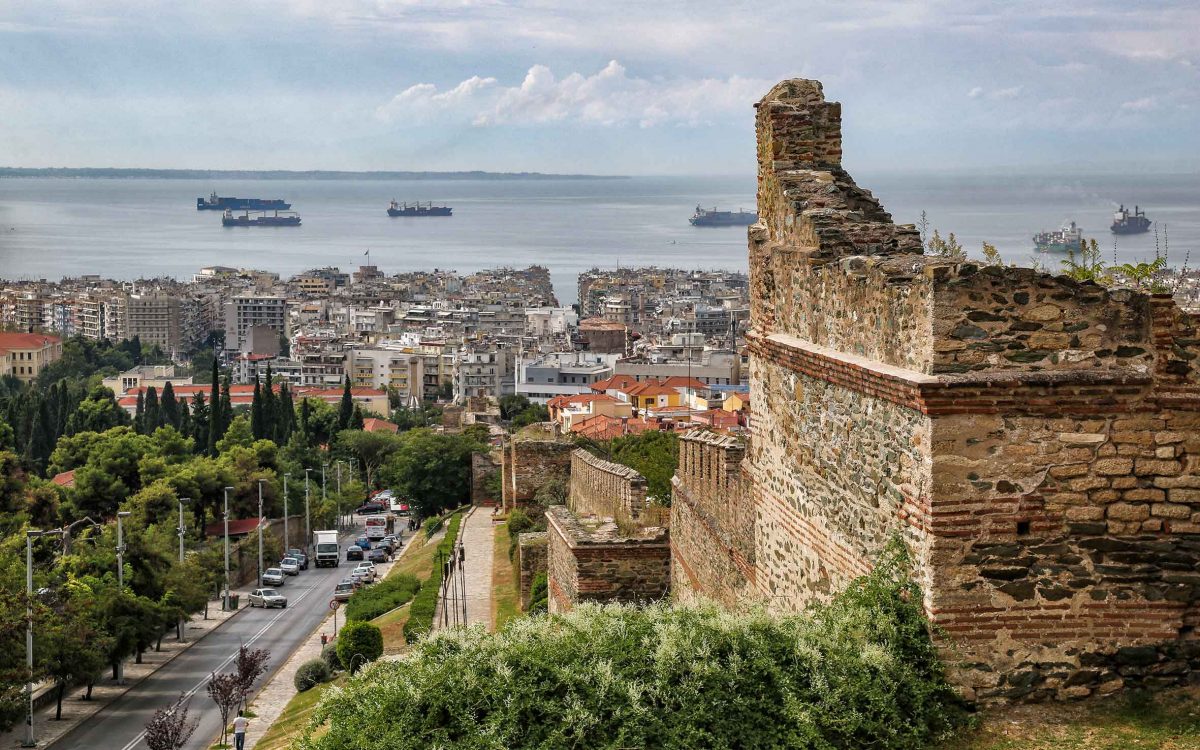City Walls
Thessaloniki’s city walls originally consisted of Hellenistic fortifications augmented in the 3rd century AD against Gothic raids. These were further strengthened and extended in the late 4th century AD by Roman emperor Theodosius I, as well as by Justinian I and Manuel II Palaeologos. Often nearly 5 m thick and 10-12 m high, their full circuit once reached 8 km. An intriguing brickwork inscription, commending Theodosius’ magistrate for his honest handling of public funds in constructing the fortifications, can still be seen today high on the city wall beside Deinarchou Street: “With unsoiled hands Hormisdas built these impregnable walls and made the city great.”
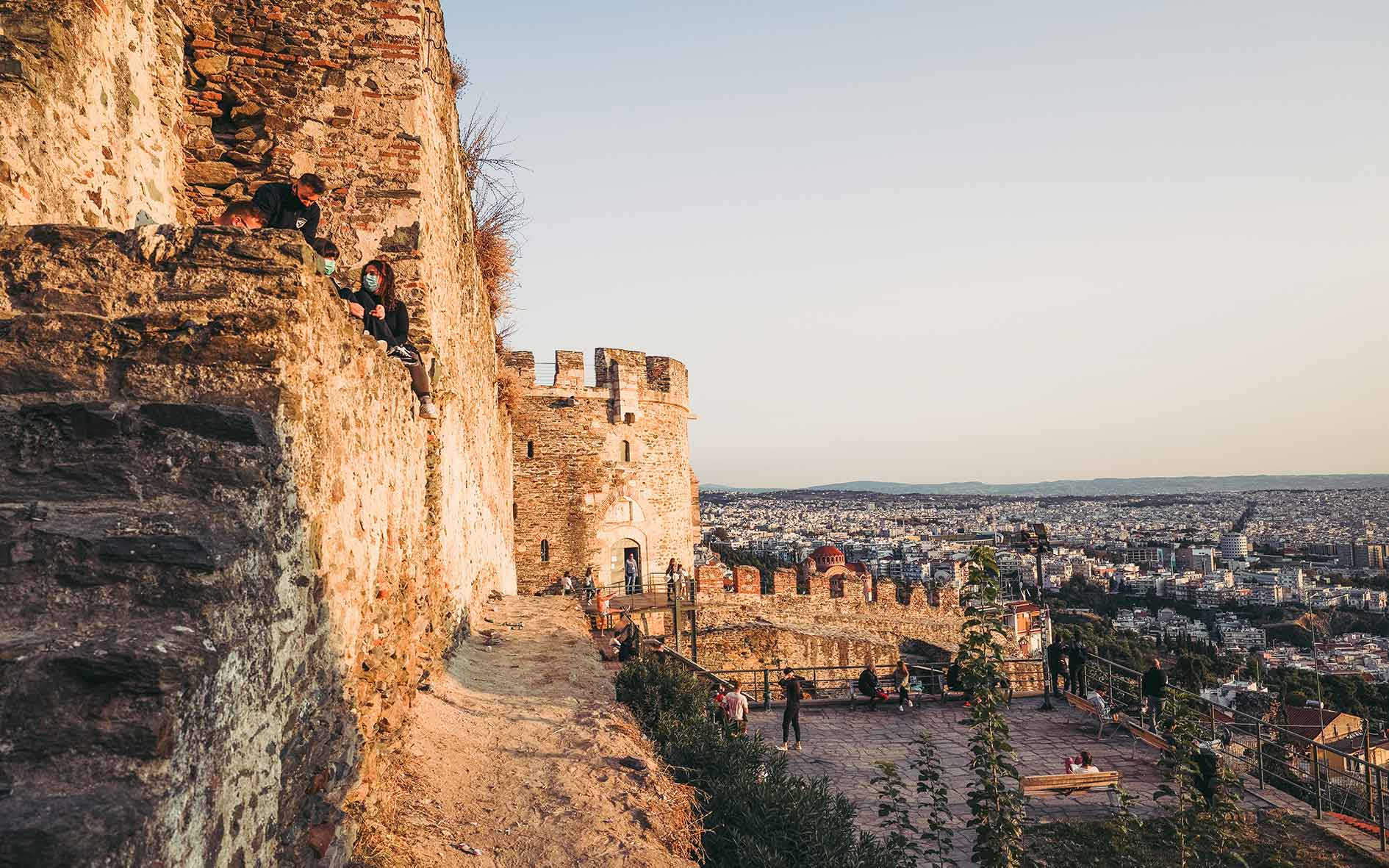
© Olga Deikou
Towers, Eptapyrgio Castle
Once equipped with more than half a dozen towers and a similar number of gates, the city’s stout defenses repeatedly kept Thessalonians safe from invasion. Today, visitors can enjoy a panoramic view over all of Thessaloniki and the Thermaic Gulf from the Trigonion Tower, located at the north-eastern corner of the walled city above the Ano Poli (Upper Town).
Further uphill, another must-see monument is the impressively restored Eptapyrgio (Seven Towers) Castle, also known by its former Turkish name, Yedi Kule. This distinct area of the city’s fortifications, originally part of Theodosius’ renovations in late 4th century, later became an enclosed castle in the 12th century; the Ottomans’ military headquarters after 1430; and ultimately a notorious prison in the 19th century, into whose dungeons were thrown political prisoners and other unfortunate souls. Often mentioned in Greek rebetiko songs, Yedi Kule continued to function as a prison until 1989.
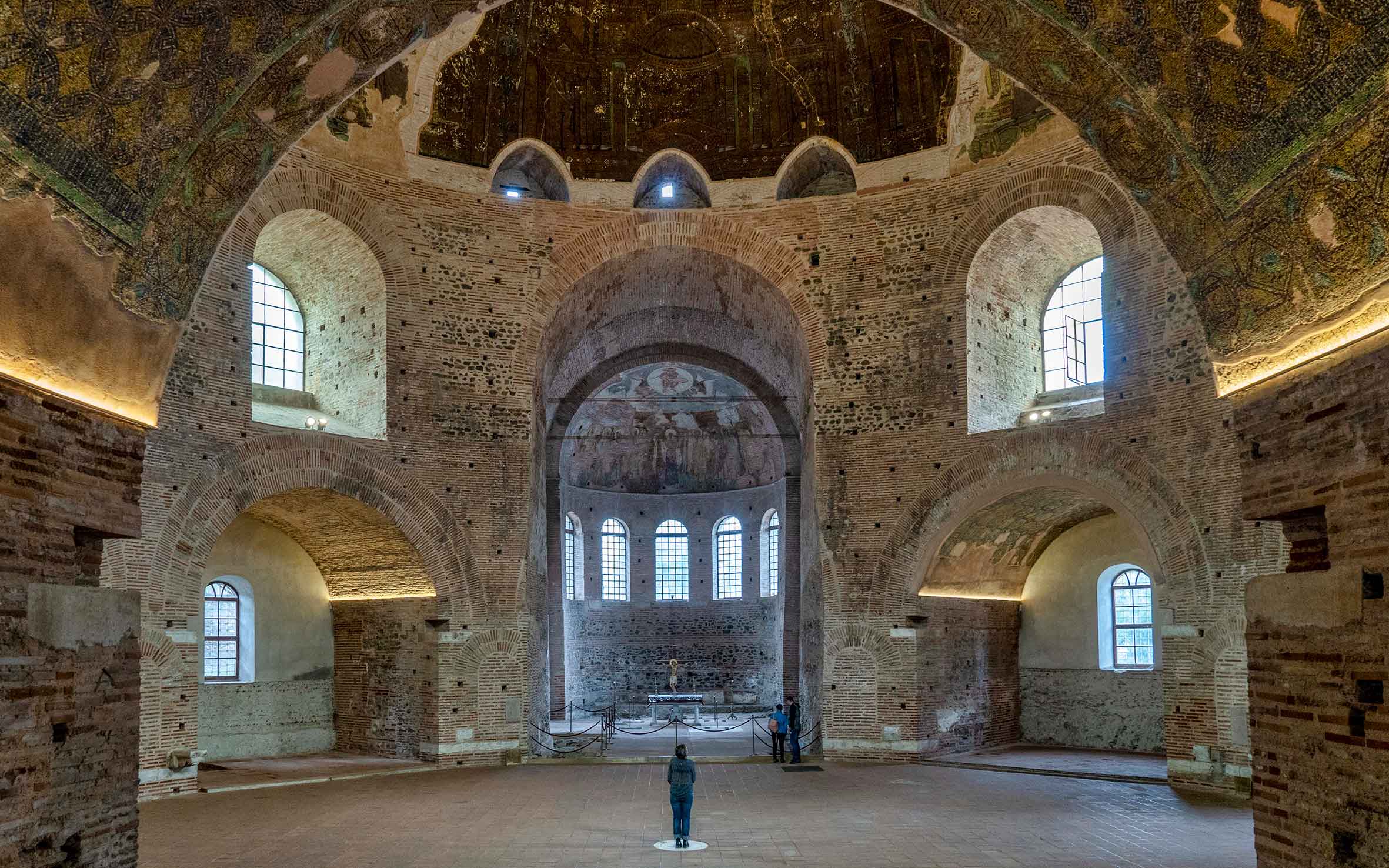
© Perikles Merakos
Rotunda
Thought to be the earliest-known Christian church in Thessaloniki, dedicated first to the Asomati (Archangels), then Agios Giorgos, the Rotunda is one of the city’s most striking Byzantine monuments, long believed to have been part of Emperor Galerius’ palace (late 3rd/early 4th century). More recent studies, however, by Greek archaeologists and art historians, have raised the question whether the Rotunda was an original palace feature, intended as a temple or tomb, and later modified under Constantine I, or a completely new addition by Constantine (AD 322-323), similarly to be used as a monumental mausoleum.
Regardless of its foundation date, the Rotunda contains some of the finest-known mosaics outside of Ravenna, Italy. They are now believed to depict not saints and martyrs, but Constantine himself with his courtiers, juxtaposed with Christian motifs to symbolize the Roman imperial and Early Christian worlds coming together. The building later became an Ottoman mosque (1591). Currently, after recent cleaning and restoration works, the Rotunda’s cavernous, Pantheon-like interior and stunning mosaics are more impressive than ever.
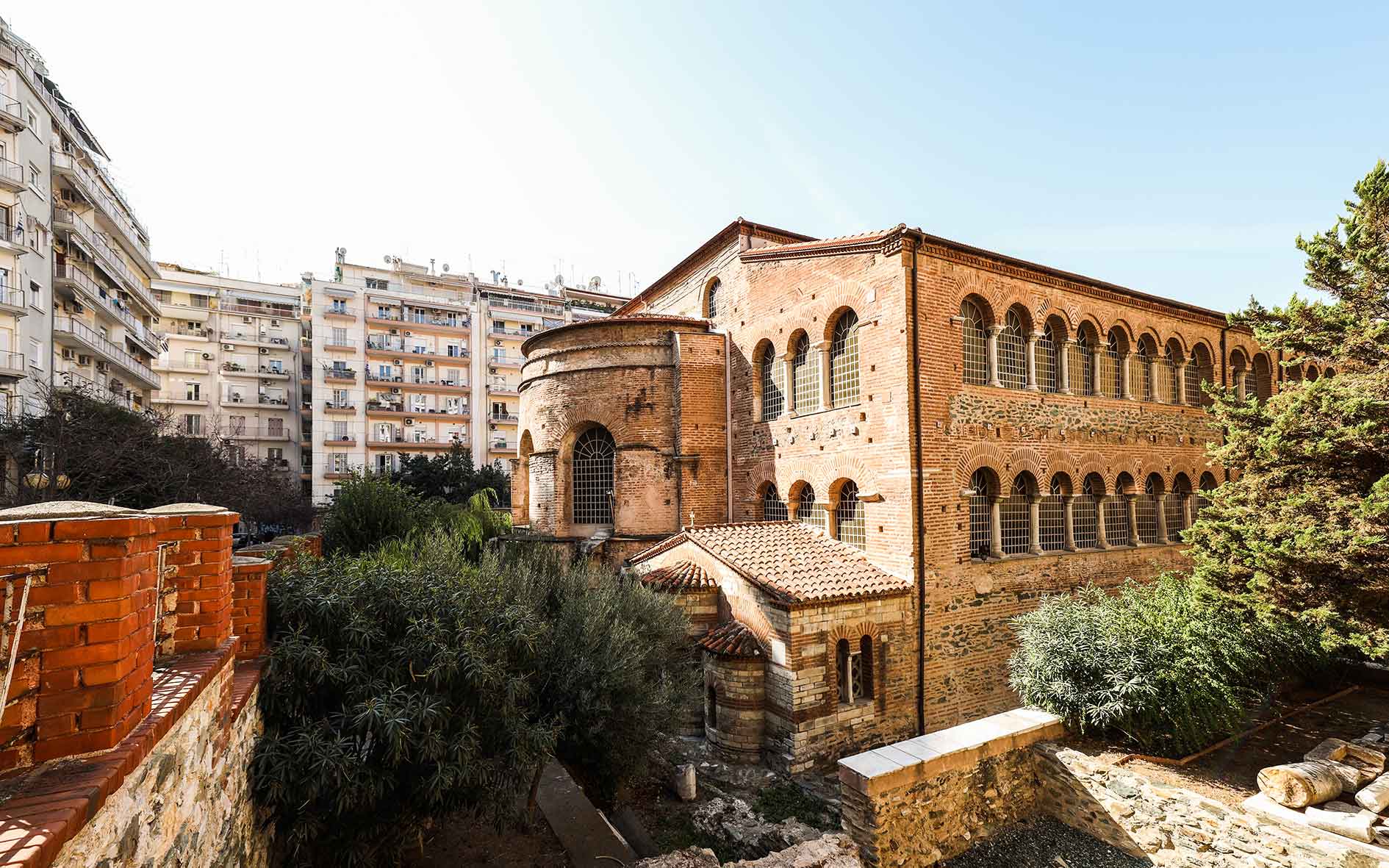
© Olga Deikou
Church of the Acheiropoietos
Built about AD 450 on the site of a Roman bath, the Church of the Acheiropoietos displays original mosaic decoration; columns topped with “Theodosian” marble capitals, produced in Thessaloniki’s sister city, Constantinople; and traces of 13th-century wall painting. The church’s Byzantine-era name derives from a miraculous icon it once held: an object claimed “not to have been made by mortal hands” (“acheiropoietos”). Dedicated to the Mother of God, this was the first of Thessaloniki’s churches to be converted into a mosque following the city’s Ottoman takeover (1430). After the expulsion of Greeks from Smyrna by the Turks in 1922, the Acheiropoietos was opened to accommodate Asia Minor refugees.
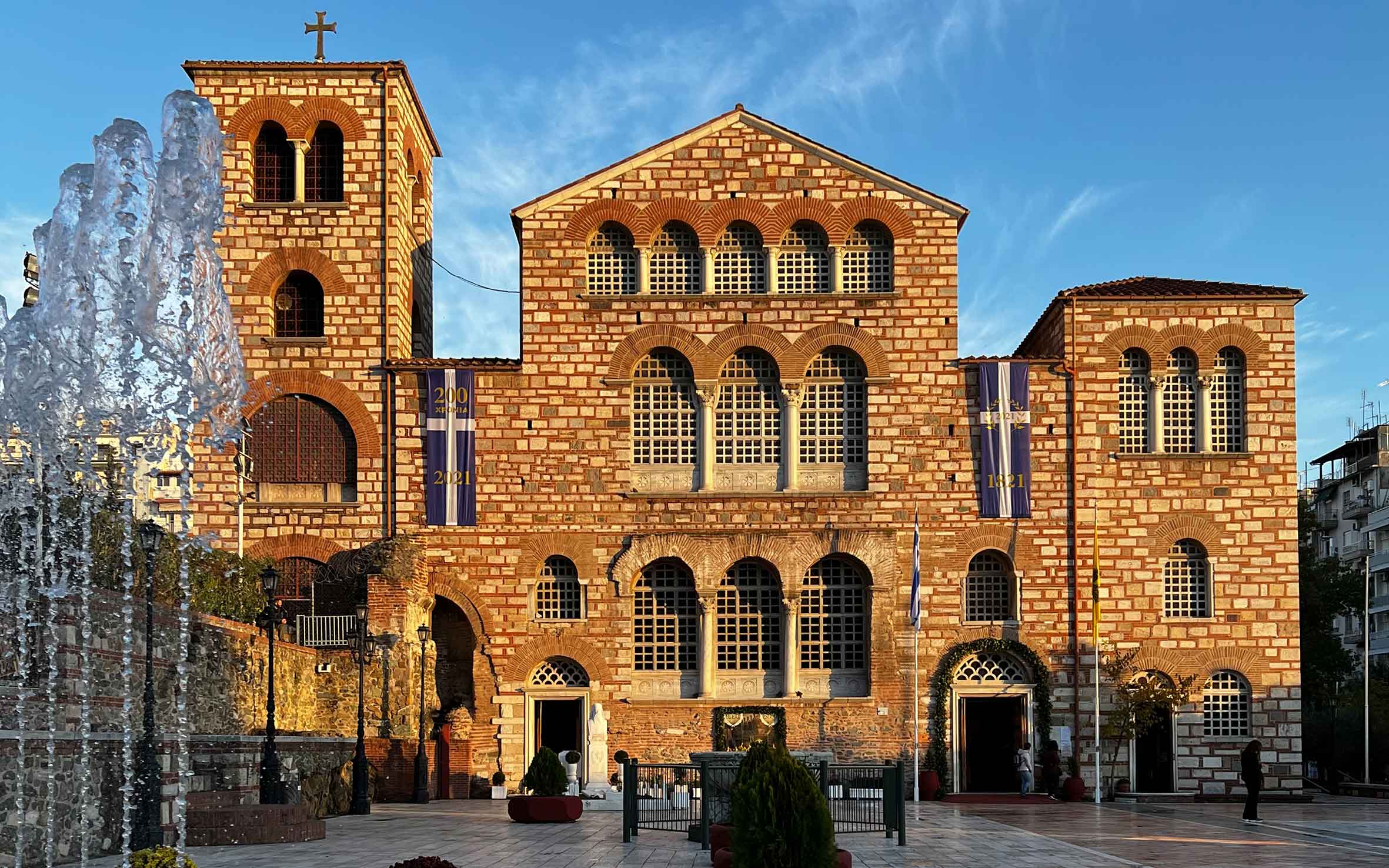
© Shutterstock
Church of Agios Demetrios
Today the centerpiece in Thessaloniki’s religious landscape, dedicated to the city’s patron saint, the five-aisled church of Agios Demetrios stands as a tribute to Thessaloniki’s history of hardship, periodic destruction and brilliant revival. Originally a small shrine (AD 320s), established in a Roman bath complex where Demetrios, an early believer in Christianity, had been imprisoned and martyred (306), this was a spot revered by pilgrims from all over the Christian world. The church was enlarged in the 5th century, extensively renovated after a fire in the 7th century, then severely damaged in Thessaloniki’s 1917 conflagration.
Now splendidly rebuilt (1926-1948), the church incorporates a portion of the Roman bath and the initial shrine in its crypt. Although much original decoration has been lost, nine superb mosaics of 5th-9th century date, mostly depicting Demetrios, and wall paintings of the 11th and 14th century are preserved.
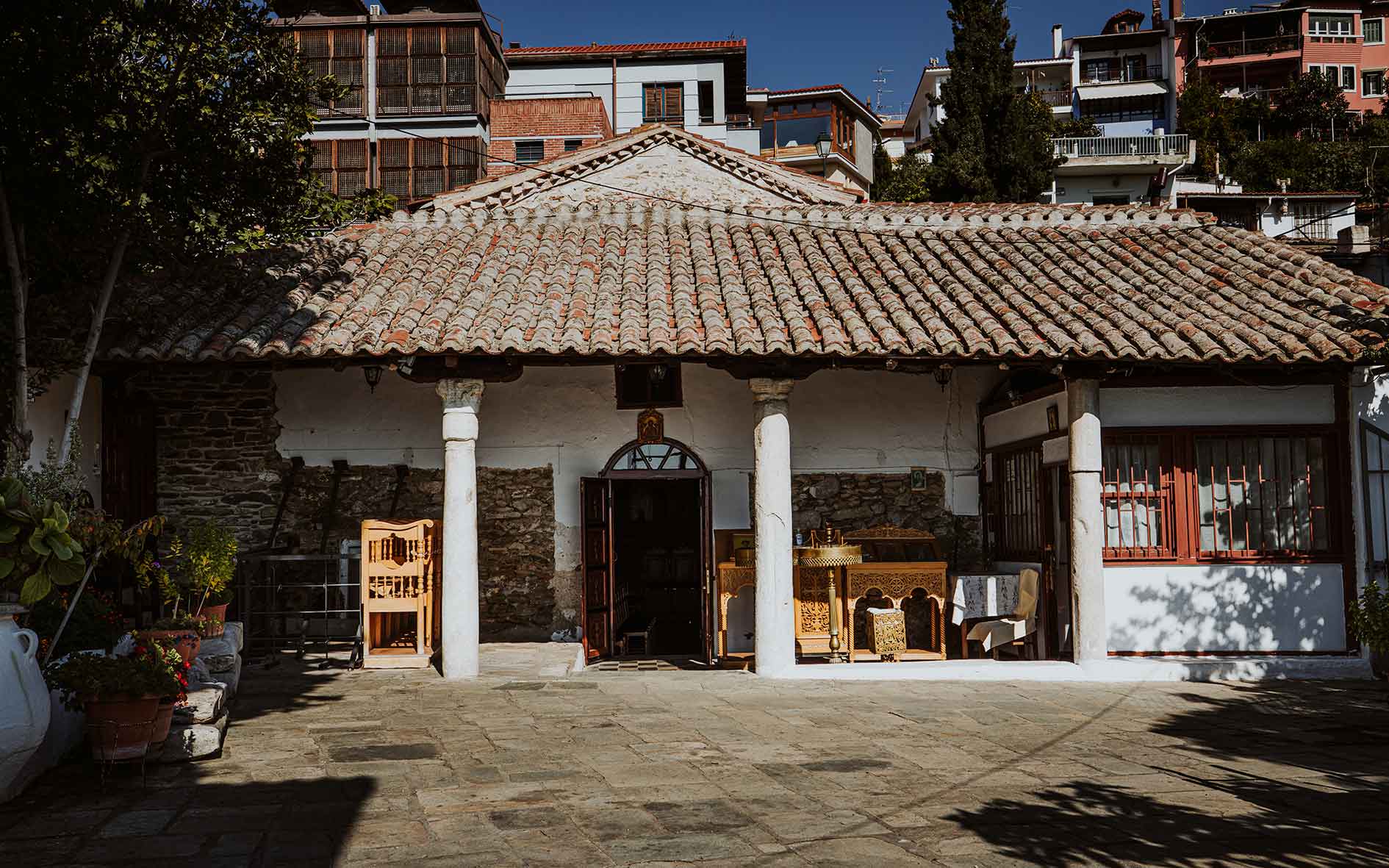
© Olga Deikou
Latomou Monastery (Hosios David)
Hidden up a twisting street in the Ano Poli, the humble Church of Hosios David, covered by a charmingly timeworn tiled roof, was once part of a monastery katholikon, but now appears more like small historic house. Inside are some of Thessaloniki’s earliest wall paintings (12th century) and a late 5th/early 6th century mosaic dating to the original church – depicting a young, unbearded Christ beside symbols of the Evangelists and images of the Hebrew prophets Ezekiel and Habakkuk (late 7th/6th century BC). After suffering an earthquake, partial collapse, conversion to an Ottoman mosque, the plastering-over of its interior and finally its rediscovery in 1921, Hosios David is truly an Early Christian survivor.
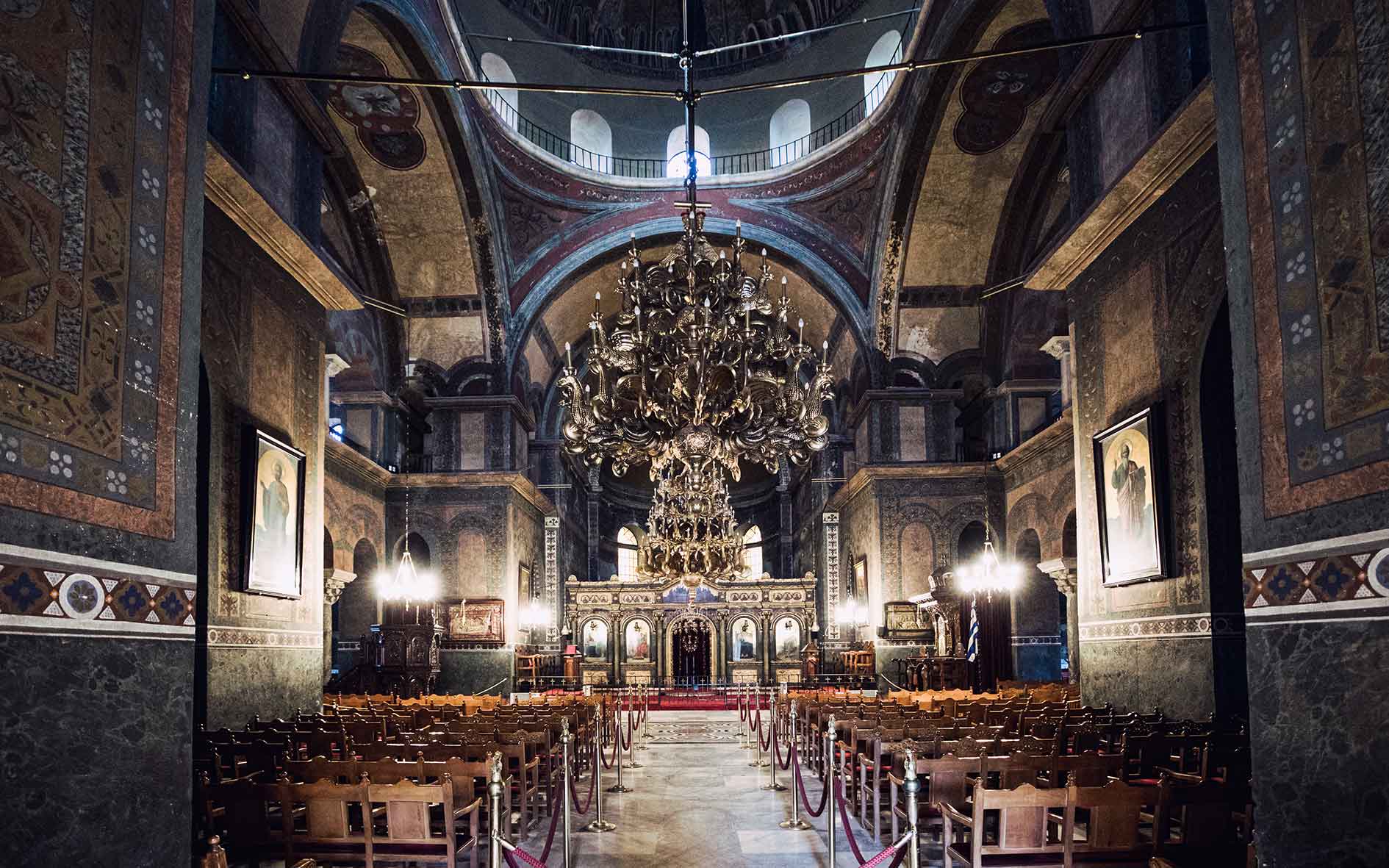
© Olga Deikou
Church of Agia Sophia
Built on an earlier, more extensive five-aisled basilica (AD 400-450), whose remains are now hidden beneath surrounding streets and apartment blocks, the Church of Agia Sophia (late 7th-early 8th century) did not originally occupy a large open space, as today, but stood at the center of a lively district of densely packed administrative and other religious buildings (for example, a bishop’s residence and baptistery). Its architecture represents an important transition between the domed basilica and the domed cruciform church, having numerous characteristics of both.
The stunning mosaic of Jesus in the church’s dome (late 9th century), surrounded by individualized, highly expressive figures of the apostles and Virgin Mary against a golden gleaming background, took its inspiration from the Christ in the dome of the Rotunda. It is recognized as one of the most important examples of Byzantine art’s “Macedonian Renaissance” (9th-11th century). Eleventh-century wall paintings preserved in the narthex include an image of a local saint, Agia Theodora of Thessaloniki. Converted to a mosque after 1523/1524, Agia Sophia was restored as a church in 1912.
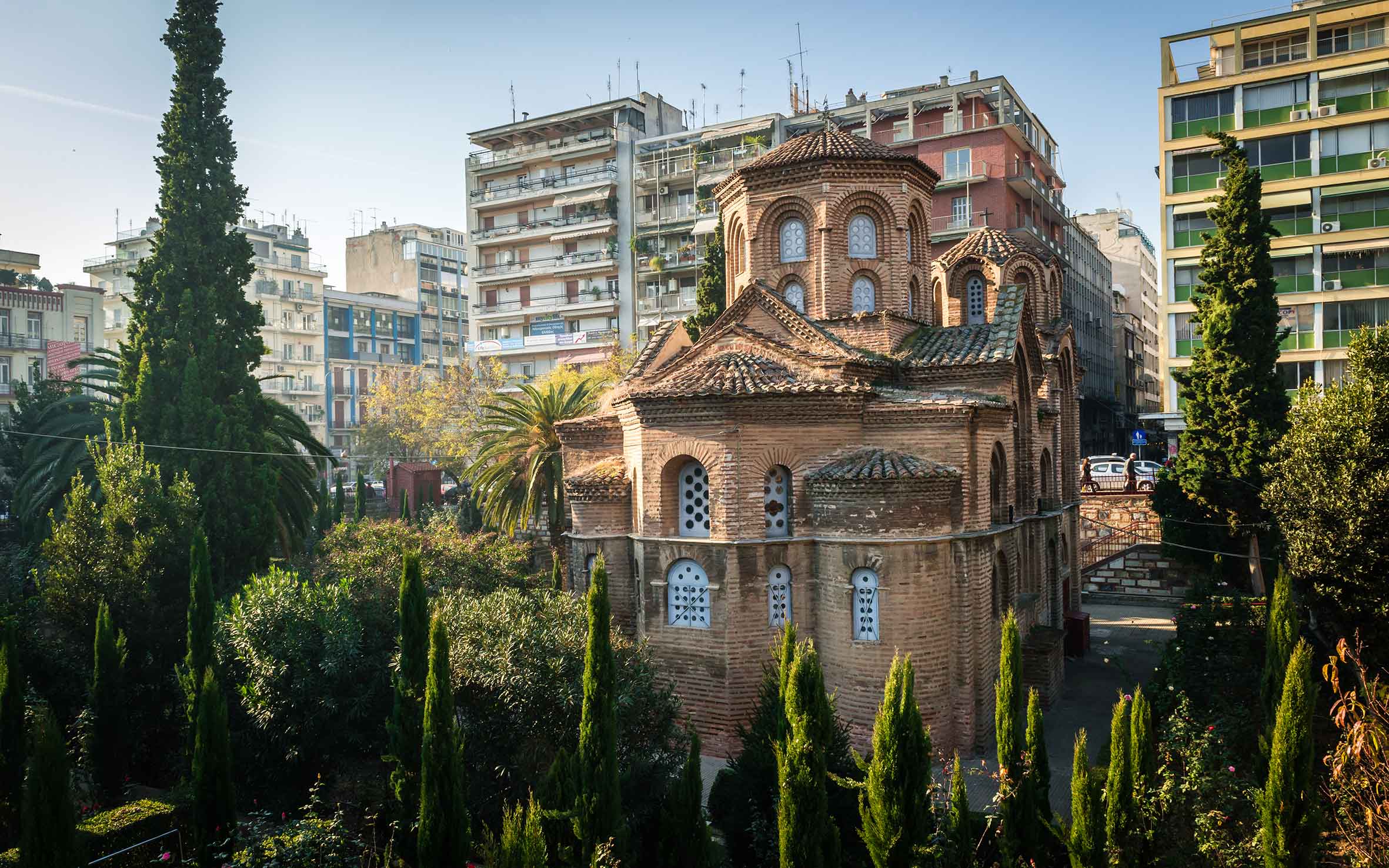
© Shutterstock
Church of Panagia Chalkeon
Dedicated to the Virgin, as its founding inscription reveals, the Church of Panagia Chalkeon (11th century) once stood in the city’s coppersmith district. Its current name is partly a Greek translation of its Ottoman Turkish name, Kazantzilar Tzami, the Mosque of the Smiths. Its exterior walls lay half-buried by accumulated earth until the building was freed and fully re-exposed in 1934.
A domed tetrastyle cruciform church, this monument is sometimes called the “Red Church” from its entirely brick structure, executed in the concealed course technique. Original wall paintings, although not well preserved, exhibit influences from both Thessaloniki (the Rotunda) and Constantinople. In the sanctuary appears the Last Supper; in the narthex, the Last Judgment of Christ, who sits enthroned between the Virgin and John the Baptist.
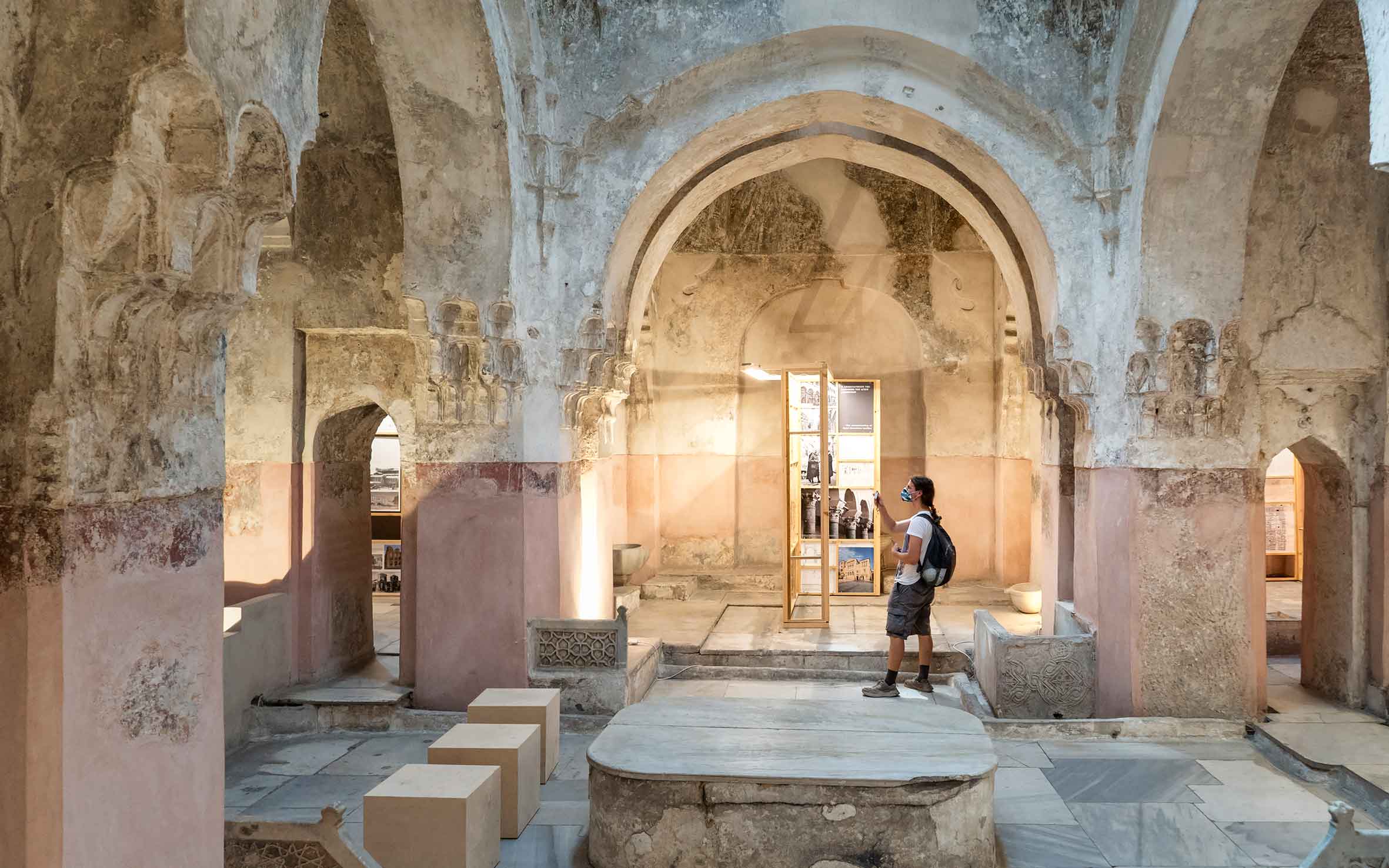
© Perikles Merakos
Byzantine Baths
A particularly fascinating monument to everyday life are the Byzantine Baths (late 12th-14th century) in the Ano Poli, which highlight the continuity in Thessaloniki’s bathing traditions from ancient times until the 20th century. Much like a Roman bath, this complex had a changing room, warm room and hot room heated with a sub-floor hypocaust system. A water reservoir over a hearth provided hot water.
In Roman and Byzantine times, such small neighborhood baths accommodated men and women during different hours or on alternating days. Converted into a double bath for both sexes in Ottoman times, the facility continued to serve the public until 1940. Other Ottoman baths preserved in Thessaloniki include the Bey Hammam, Pasa Hammam, Yeni Hammam and Yahudi Hammam. Now handsomely restored, the Byzantine Baths have been open to visitors since 2015 as a museum and exhibition space.
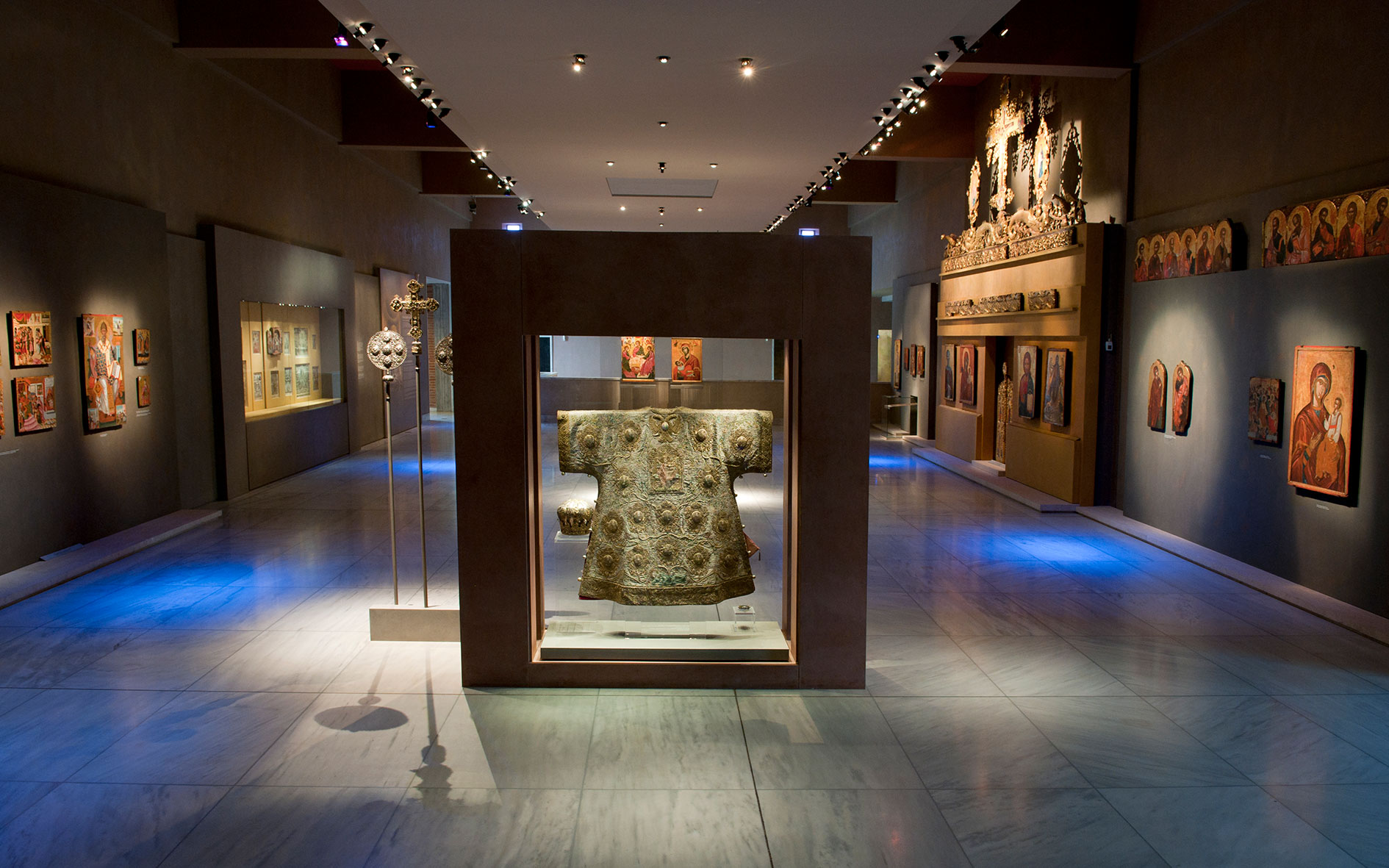
© Vangelis Zavos
Museum of Byzantine Culture
A tour of Byzantine Thessaloniki is never complete without a visit to the Museum of Byzantine Culture. Originally sanctioned in 1913 and intended to be installed at the Church of the Acheiropoietos, the museum ultimately opened in 1994 in its own building, designed by architect Kyriakos Krokos.
Strolling through its flowing galleries arranged around a large atrium, one finds eclectic, thematic and chronologically arranged exhibits that shed light on the entire spectrum of Byzantine civilization. There is much to see, with artifacts ranging from marble architectural elements recovered from Early Christian churches, to mosaic fragments, sculptures, pottery, farming implements, jewelry and impressive icons, as well as ecclesiastical prints, plates, embroidery, books and many radiant silver and gold objects reflective of Byzantium’s rich culture.

